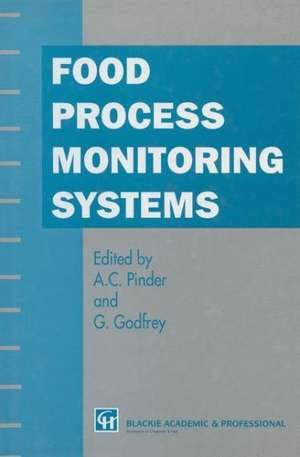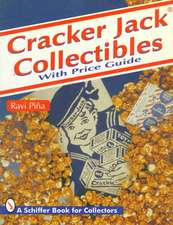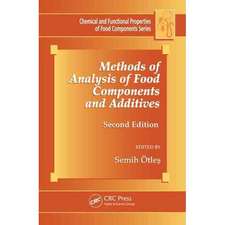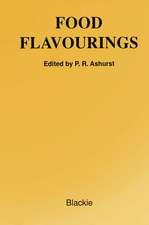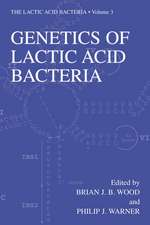Food Process Monitoring Systems
Autor A.C. Pinder, G. Godfreyen Limba Engleză Hardback – 30 dec 1995
| Toate formatele și edițiile | Preț | Express |
|---|---|---|
| Paperback (1) | 384.86 lei 6-8 săpt. | |
| Springer Us – 20 oct 2012 | 384.86 lei 6-8 săpt. | |
| Hardback (1) | 643.65 lei 6-8 săpt. | |
| Springer Verlag – 30 dec 1995 | 643.65 lei 6-8 săpt. |
Preț: 643.65 lei
Preț vechi: 757.24 lei
-15% Nou
Puncte Express: 965
Preț estimativ în valută:
123.17€ • 131.70$ • 102.69£
123.17€ • 131.70$ • 102.69£
Carte tipărită la comandă
Livrare economică 17 aprilie-01 mai
Preluare comenzi: 021 569.72.76
Specificații
ISBN-13: 9780751400991
ISBN-10: 0751400998
Pagini: 220
Greutate: 0.51 kg
Editura: Springer Verlag
Colecția Springer
Locul publicării:Boston, MA, United States
ISBN-10: 0751400998
Pagini: 220
Greutate: 0.51 kg
Editura: Springer Verlag
Colecția Springer
Locul publicării:Boston, MA, United States
Public țintă
ResearchCuprins
1 Introduction.- 2 Fluorescence cytometry for the rapid analysis of food microorganisms.- 2.1 Introduction.- 2.2 Optical analysis.- 2.3 Light sources for optical cytometry.- 2.4 Parameters measurable by optical techniques.- 2.5 Research studies.- 2.6 Routine use of flow cytometry in quality assurance.- 2.7 Conclusions.- 3 Infrared spectroscopic methods.- 3.1 Introduction.- 3.2 Infrared spectroscopy.- 3.3 Instrumentation for process monitoring and control.- References.- 4 Machine vision for the food industry.- 4.1 Introduction.- 4.2 Machine vision systems.- 4.3 Considerations for use of machine vision systems.- 4.4 Machine vision applications for the food industry.- References.- 5 Particle sizing.- 5.1 Introduction.- 5.2 Particle sizing within the food processing industry.- 5.3 Low angle laser light scattering (LALLS).- 5.4 Sub-micron particle sizing.- 5.5 Measurement of mobility and zeta potential.- References.- 6 Ultrasonic methods.- 6.1 Introduction.- 6.2 Principles of ultrasonic wave propagation.- 6.3 Measurement of ultrasonic properties.- 6.4 Applications to food systems.- 6.5 Future developments.- References.- 7 Mass spectrometry.- 7.1 Introduction: basic principles.- 7.2 Basic definitions.- 7.3 Ion analysis.- 7.4 Detection and data acquisition.- 7.5 Tandem mass spectrometry.- 7.6 Ionization techniques.- 7.7 Inlet systems: sample introduction.- 7.8 Applications in food science technology.- 7.9 Current and future developments.- References.- 8 Chemical sensors.- 8.1 Introduction.- 8.2 Sensor types.- 8.3 Microelectronic sensors for pH, acidity and ions.- 8.4 Sensor arrays for aroma and indicator volatiles.- 8.5 Biosensors based on amperometric, potentiometric and thermometric devices.- 8.6 Chemically sensitive optical and acoustic devices.- 8.7 Sensor applications employing the marker approach.- 8.8 Discussion.- References.
